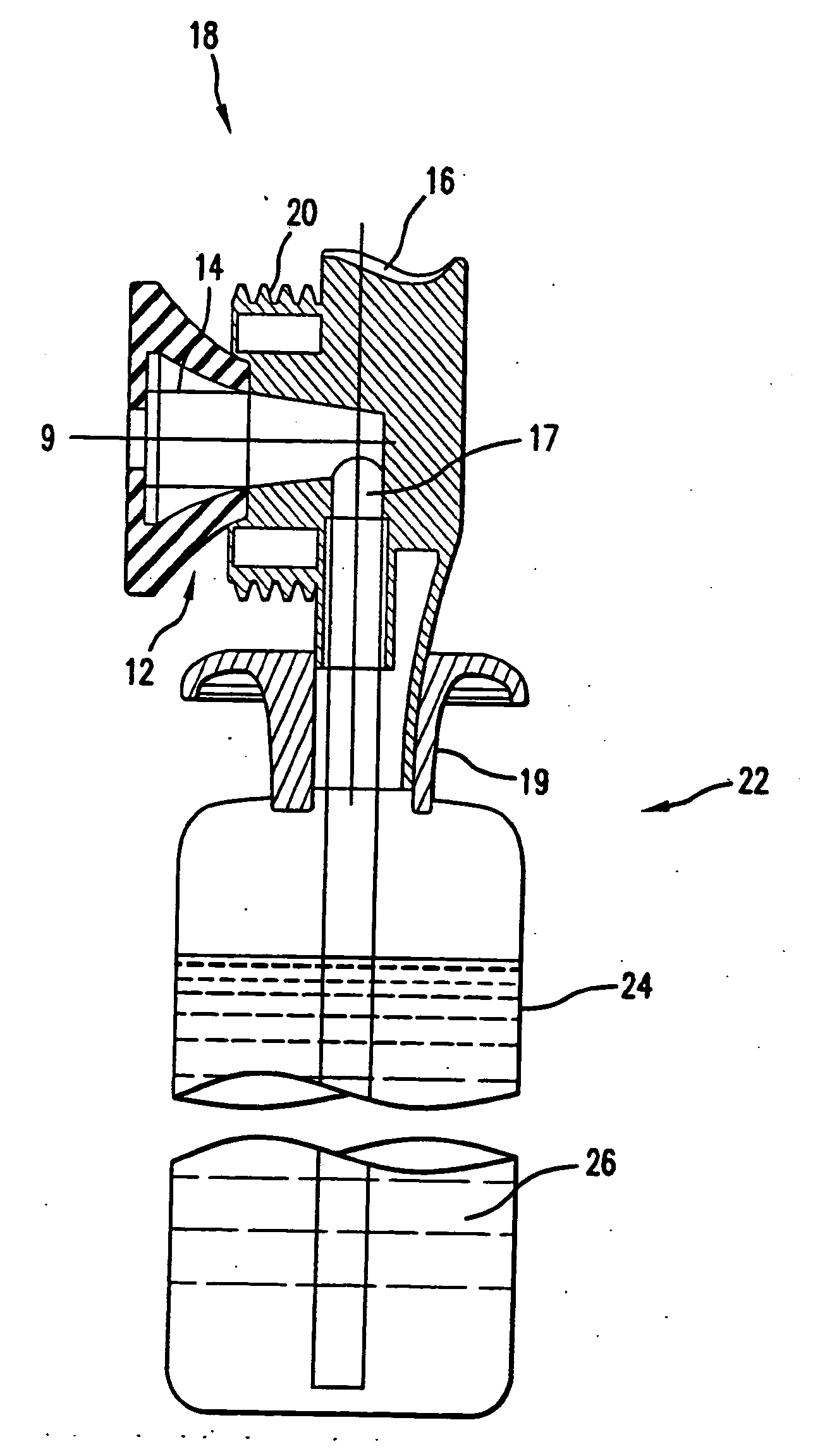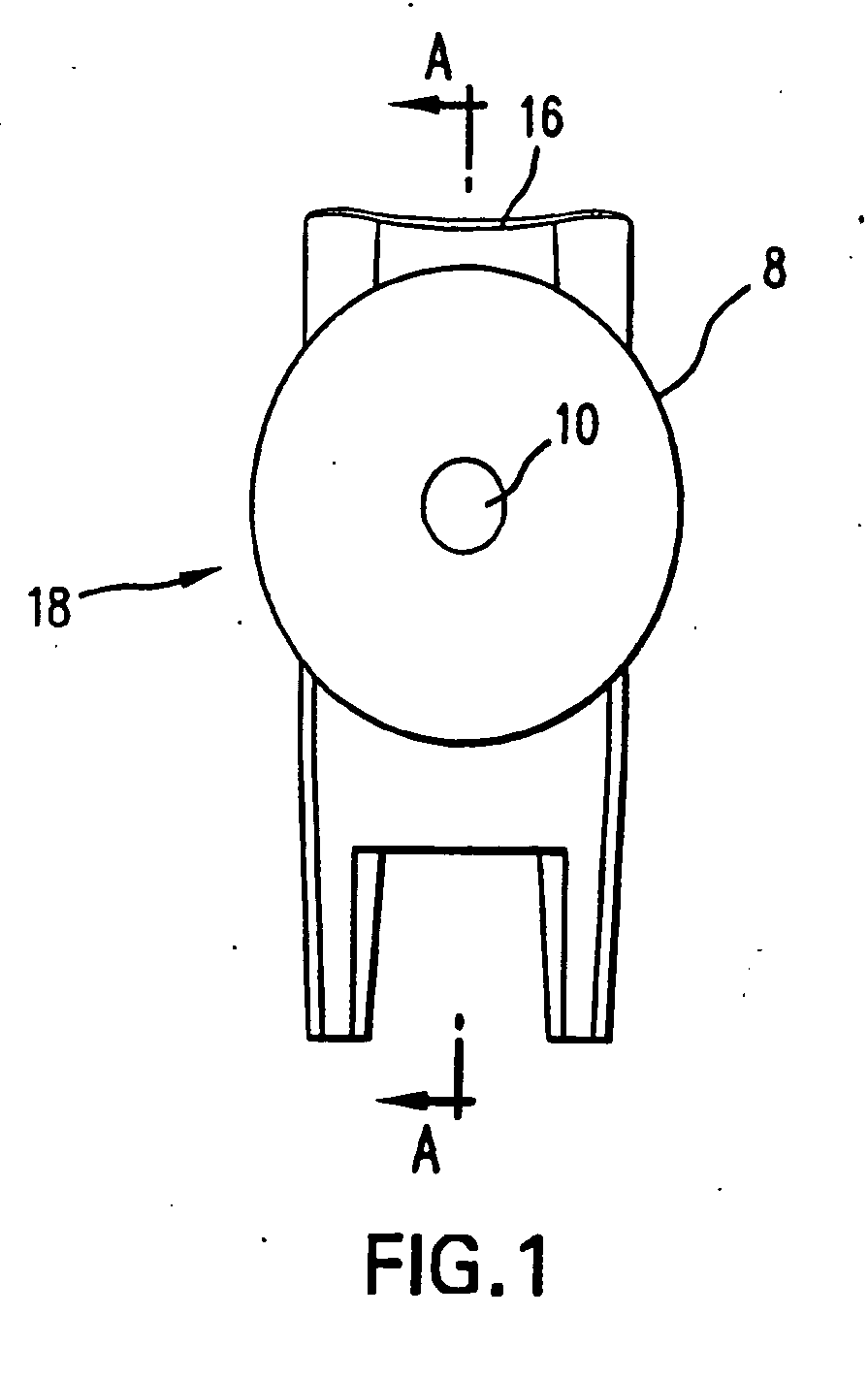Pressure chamber nozzle assembly
a technology of pressure chamber and nozzle, which is applied in the direction of liquid handling, combustion types, applications, etc., can solve the problems of aerosol spray cans not being able to work, heavy and particulate materials to be dispersed have a tendency to clog up the valve assemblies, and the nozzle on occasion may clog, so as to facilitate greater compression of sprayable materials and improve shearing of materials. , the effect of increasing the pressur
- Summary
- Abstract
- Description
- Claims
- Application Information
AI Technical Summary
Benefits of technology
Problems solved by technology
Method used
Image
Examples
Embodiment Construction
[0028] The present invention provides a valve assembly for use in an aerosol spray can which is configured to spray material with an increased pressure, an increased degree of atomization and reduced clogging over traditional valve assemblies known in the art. Such improved functionality stems from the inclusion of a pressure chamber in the dispensing assembly prior to the discharge opening. The nozzle assembly is capable of spraying a wide variety of different types of materials. Such materials include, but are not limited to, paints, resins, other liquids and viscous materials or materials with large particulates. The present invention may also be used in a wide variety of spray devices, including but not limited to, spray guns, spray hoppers, aerosol cans and canisters, and the like.
[0029] The present invention provides an inexpensive and economical means for dispensing materials with an increased degree of atomization and a reduced incidence of clogging of the nozzle. Such redu...
PUM
 Login to View More
Login to View More Abstract
Description
Claims
Application Information
 Login to View More
Login to View More - R&D
- Intellectual Property
- Life Sciences
- Materials
- Tech Scout
- Unparalleled Data Quality
- Higher Quality Content
- 60% Fewer Hallucinations
Browse by: Latest US Patents, China's latest patents, Technical Efficacy Thesaurus, Application Domain, Technology Topic, Popular Technical Reports.
© 2025 PatSnap. All rights reserved.Legal|Privacy policy|Modern Slavery Act Transparency Statement|Sitemap|About US| Contact US: help@patsnap.com



